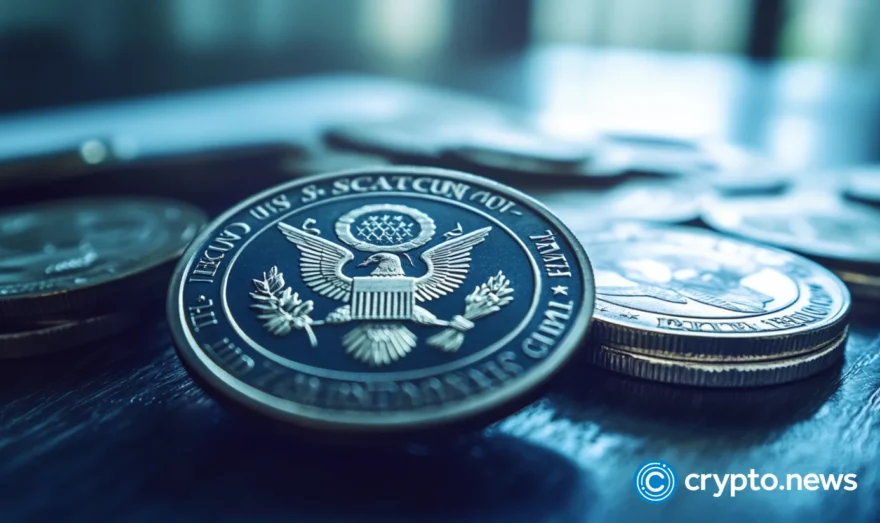Tokenized securities are redefining compliance | Opinion

Disclosure: The views and opinions expressed here belong solely to the author and do not represent the views and opinions of crypto.news’ editorial.
The securities market is riddled with regulatory noncompliance cases. Despite existing elaborate global and national securities regulation frameworks, regulators face steep enforcement challenges. Besides individual losses, noncompliance erodes credibility and negatively impacts the markets. Asset tokenization using distributed ledger technology instills market discipline through inherently compliant financial instruments. It ensures effective regulatory enforcement through blockchain-based KYC/AML, transparent reporting mechanisms, and immutable data history.
Ineffective regulatory enforcement spells financial doom
The 2008 financial crisis demonstrates the need to properly enforce financial regulations to maintain global economic stability. After the worldwide meltdown, a G20 report on ‘Enhancing Sound Regulation and Strengthening Transparency’ focused on strict regulatory enforcement. The report said:
“Achieving the objectives of the regulatory framework requires not only sound regulation but also effective enforcement. No matter how sound the rules are for regulating the conduct of market participants, if the system of enforcement is ineffective…the ability of the system to achieve the desired outcome is undermined.”
In an IMF working paper on ‘The Challenge of Enforcement in Securities Markets’, Ana Carvajal and Jennifer Elliott provided several historical examples of noncompliance. For instance, in 2008, the US financier Bernard Madoff ran a Ponzi scheme worth $50 billion; in 2005, Enron and Refco investors lost $65 billion and $48.8 billion due to large-scale accounting fraud.
These examples illustrate the inability to detect and prevent fraud, even by powerful law enforcement agencies like the US Securities and Exchange Commission. More importantly, they show the difficulty of regulatory enforcement despite having adequate legal authority and resources.
Securities regulation’s primary goal is protecting individual investors and consumers from fraud, misappropriation of client funds, and unsuitable advice from securities companies. Beyond individual protection, strict regulatory standards maintain market cleanliness and uphold investor confidence in the industry.
Regulatory bodies must act strictly during insider trading and deliberate market manipulation to restore financial stability and reinstate normalcy. But, regulatory agencies can only act effectively if they have the necessary tools to supervise and enforce existing legislation for long-term market security.
Historically, regulatory institutions have had some inherent weaknesses that have accelerated market turmoil. For example, weak public disclosure systems gnaw at investor confidence as the magnitude of balance sheet risk remains opaque.
OTC markets lack transparency as stakeholders have limited information access to accurate pricing, trading volume, and open interest. Moreover, due to systemic faults, existing cross-border resolution mechanisms to solve financial irregularities remain inadequate and ineffective.
Until recently, regulators lacked the right tools to supervise and effectively enforce regulations to prevent legislative violations. DLT-based asset tokenization empowers regulators to strengthen enforcement actions and compliance through timely detection and intervention to mitigate market turbulence.
Tokenized securities ensure better regulatory compliance
Tokenized securities enable a strong compliance regime by providing real-time insights into transaction history and ownership records. Regulators thus leverage DLT to monitor financial activity, audit ledgers, prevent fraud, and ensure compliance through automated solutions. The G20 report stated:
“A regulatory framework with strong monitoring, prosecution, and application of penalties provides the incentives for firms to follow the rules. This, in the end, adds to the framework’s credibility and enhances investor confidence in the financial system.”
With blockchain-based tokenized securities, companies streamline reporting requirements, providing accessible and accurate information to investors. Consequently, tokenized securities help regulatory bodies to monitor events and make timely prosecutions during violations, thereby maintaining credibility.
Tokenization helps securities-issuing authorities create and manage identities on-chain for seamless compliance with KYC/AML guidelines. Identity management becomes more effortless and transparent during the token’s lifecycle since blockchain immutability guarantees tamper-proof data storage.
Further, tokenized securities use smart contract-based automation during transactions, with DLT maintaining a unified database. Unlike legacy security markets, where intermediaries maintain individual data ledgers and position reconciliations become costly, blockchains avoid information asymmetry between stakeholders.
Without multiple ledgers with different pricing data, regulatory agencies find tracking on-chain tokenized securities easier for any irregularities. Unlike centralized intermediaries, who can alter aggregated transaction data, DLT-based securities empower regulators to monitor timestamped security issuance and purchase history.
In a global market, tokenized securities make regulatory compliance easier for cross-border transactions, fractional ownership, and secondary markets. Apart from generating more market liquidity, tokenization helps financial entities to abide by local, national, and international laws simultaneously.
The securities market funds diverse real-world sectors and catalyzes economic growth. Innovations like tokenized securities are crucial for enhancing market efficiency in a global and interconnected financial market.
Consequently, the regulatory framework must keep pace with market risks to enforce regulations effectively. As large financial institutions operate in multiple jurisdictions for a global client base, tokenized securities offer a better-coordinated compliance regime.
Securities tokenization accelerates global dispute resolution and consistently regulates financial instruments within and across national borders. It also provides the infrastructure to reduce counterparty risks and pricing mismatches and maintain stable market health through compliant securities products.
A borderless compliance framework
In an increasingly globalized financial landscape, enforcing consistent regulations across jurisdictions is one of the toughest challenges regulators face. Tokenized securities offer a solution by embedding compliance logic into the asset itself. Whether traded in New York, Zurich, or Singapore, the same smart contract can enforce the same rules.
This innovation has profound implications: cross-border settlement becomes faster and more secure; regulators can coordinate oversight in real-time; and markets become more inclusive through fractional ownership and improved access.
Compliance by design, not by enforcement
Traditional securities rely on intermediaries, fragmented data sources, and delayed reporting, which makes real-time oversight nearly impossible. In contrast, tokenized securities flip the paradigm: they are born compliant. With every transaction recorded immutably on-chain, regulators gain instant visibility into asset ownership, transaction histories, and identity verification—all without breaching privacy.
Smart contracts automate compliance checks like KYC/AML and transaction limits, ensuring that rules are followed before trades are even executed. This isn’t just more efficient; it’s proactive enforcement hardwired into the system.
Building resilience with technology
Legacy markets depend on trust—between brokers, custodians, exchanges, and regulators. Tokenization shifts that trust to code and consensus. It creates a financial infrastructure where compliance isn’t a checkbox at the end of a trade, but a living, breathing part of every asset’s lifecycle.
This resilience matters. With tokenized securities, we don’t just react to market failures—we prevent them. And in doing so, we build a more robust, transparent, and accessible financial future.













